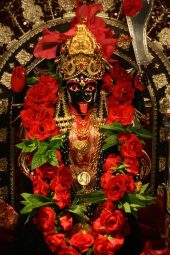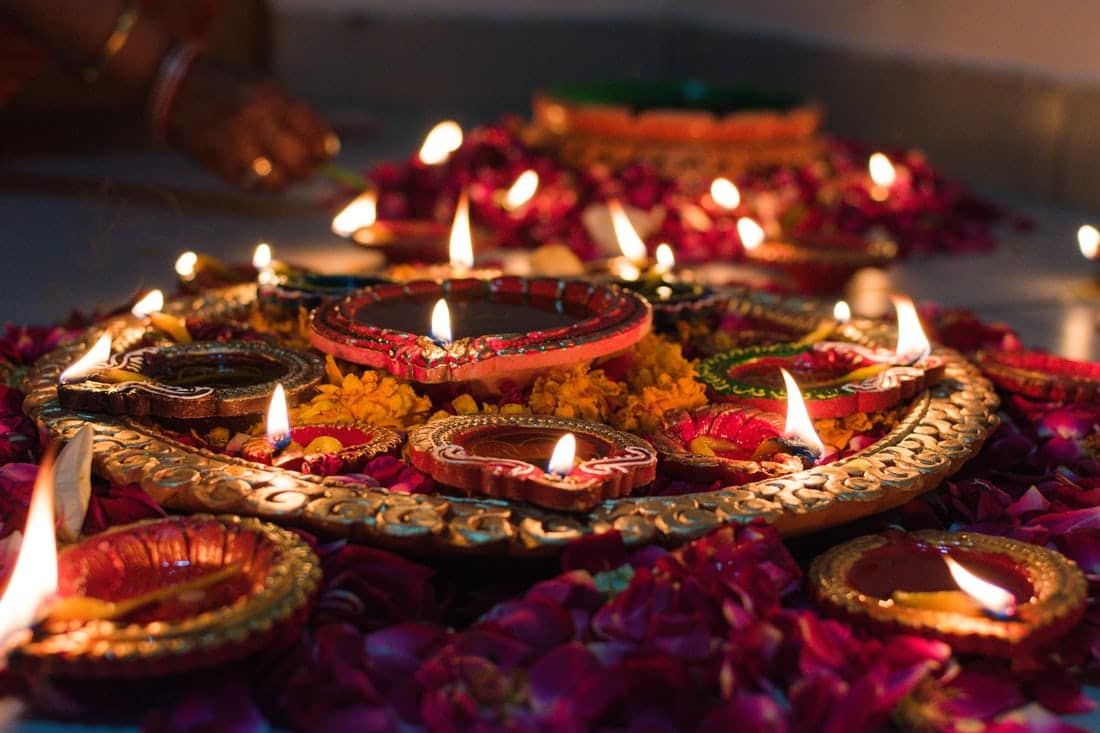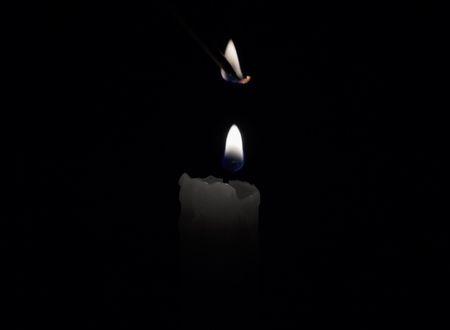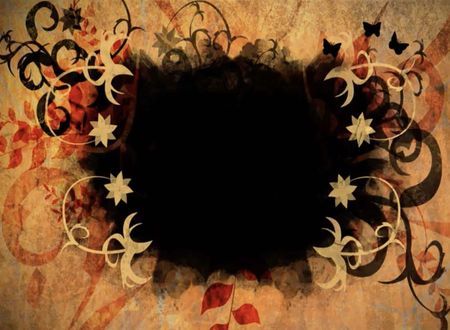The Essence of Diwali
Lighting Up Consciousness
🍁
asato mā sadgamaya,
tamaso mā jyotirgamaya,
mṛtyormā'mṛtaṃ gamaya,
oṃ śāntiḥ śāntiḥ śāntiḥ.
—Brihadaranyaka Upanishad (1.3.28)
[ Lead us from Untruth to Truth,
Lead us from Darkness unto Light,
Lead us from Death to Immortality.
Om Peace Peace Peace. ]
Diwali is around the corner. For us Indians, this festival holds great significance, just like Navaratri. Not only Hindus, but Jains, Sikhs and Newar Buddhists of Nepal also celebrate this festival in their own ways. What’s more interesting, many countries outside India also celebrate Diwali with great excitement and fervour—for example, Canada, United Kingdom, Thailand, Indonesia, Mauritius, Singapore, Malaysia, Nepal, Sri Lanka etc. among others.
The Cultural Context
The day of Diwali coincides with the darkest night of the Indian lunisolar month of Kartik, in the late autumn season after Vijaya-Dashami or Dussehra. In India, Diwali is celebrated for five days, which begins with Dhanteras on the 13th day of the moon. The 14th day is observed as Naraka Chaturdashi or Bhoot Chaturdashi, the day when Lord Krishna defeated the demon king Narakasur and rescued 16,000 women captives, thereby marking the victory of good over evil. The 15th day of the moon or the new moon day of the month of Kartik marks the climax, and this is the day we celebrate as Diwali. The next day is the Govardhan Puja divas and the 5th day is Bhatri Dwitiya or Bhai Dooj, a day to celebrate the bond between brothers and sisters.
So, these five days are a grand celebration.
Diwali or Deepavali (also dīpāvali) derives its name from two Sanskrit words— ‘dīpā’ or ‘deepam’ which means ‘oil lamps’ and ‘avali’, meaning ‘a row or series’. So Deepavali means a row or series of oil lamps. Hence, Diwali is called the festival of lights. During these days, homes and streets are decorated with oil lamps and decorative lighting. People put on new clothes and exchange sweets and other gifts among each other to strengthen the sense of community bonding. Dance, music, show of fire-works and rituals are performed. In a nutshell, Diwali is not just a festival of lights, but a celebration of life!
The Origin
The origin of this festival is very ancient. In Skanda Purana, there is mention of oil lamps. But the most popular story comes from the Ramayana. In the Hindu tradition, Diwali is associated with the return of Prabhu Ram and Mata Sita, along with Lakshman and Hanuman, to Ayodhya, after a long 14 years of exile and defeating the evil king of Lanka, Ravana, who abducted Mother Sita. Avadhvasis lit lamps that day as a symbol of the triumph of good over evil, because Ravana was killed and prosperity and happiness came to Ayodhya. In the tradition it is believed that Prabhu Ram and Mata Sita are the avatars of Lord Vishnu and Goddess Lakshmi. Devi Lakshmi is the goddess of wealth and prosperity. That’s why the day of Diwali is also dedicated to the worship of Devi Lakshmi. Both Jains and the Newar Buddhist community worship Devi Lakshmi on this day.
While in Bengal, Diwali is celebrated as the worship of the Goddess Kali, the dark complexioned fierce aspect of the Divine Feminine. The worship of Kali comes from Tantrik traditions. Kali is that fierce form of the Mother Goddess who killed demons like Chanda and Munda (thereby gaining the name Chandi or Chamundi), Shumbh and Nishumbh, and Raktabeej. Therefore, Kali Puja in Bengal is celebrated in the spirit of victory of devi over demons or asuras, thereby symbolising the triumph of good over evil forces.

[Dakshineshwar Kali Idol]
Jains celebrate this day as the final liberation or nirvana of Mahavira in 527 BCE. The Jains believe, on that day 18 kings assembled for the final teachings of Mahavira, and they declared that oil lamps be lit to celebrate that day as an auspicious day. So, for Jains this day symbolizes mukti or kaivalya, the ultimate transcendence.
The Newar Buddhists in Nepal call this festival Tihar, and they worship goddess Lakshmi and light oil lamps.
The Sikh community celebrate this day as the Bandi Chhor Divas, the day when Guru Hargovind Singh was released from the Gwalior Fort from the prison of Mughal Emperor Jahangir. So for them this is a day of celebration—symbolizing that good ultimately wins over evil.
The Essence
So, the whole symbolism behind this celebration of lights is the victory of good over evil, of light over darkness, and of knowledge over ignorance. Indologist and scholar of religious studies, Lindsay Harlan described this festival as the overcoming of “darkness of ignorance”.
The oil lamp symbolizes the spark of divinity which is there in all of us. In the Skanda Purana, deepam is said to be a part of the sun—and sun symbolizes the blazing consciousness or the Atman.
Therefore, Diwali is the celebration of overcoming all the evil forces, ignorance and obstacles in nature and within us, leading us to our ultimate transcendence.
This is the essence of Diwali, when we overcome our evil tendencies, remove the darkness that envelopes our soul and destroy ignorance and shine in knowledge.
How to Celebrate Diwali
So, let’s take a pledge to celebrate this most auspicious festival in responsible and compassionate ways. Let’s not celebrate Diwali just as a festival of lights, but also as a celebration of life. Here are my thoughts on how we can make this Diwali a truly enlightening experience:
- Take the sankalp that we will try to bring light into the lives of as many people as possible. Those beggars, those homeless and hungry people and their children, those who are in old age homes or in bastis—we will try to light up their lives also.
- Take the precautions that pets as well as street animals do not suffer because of excessive noise or firecrackers.
- Donate old and no-longer-used clothes to the needy, because winter is coming. They will be in need of these. We will anyway have new ones sooner or later, but for them it is a big deal and a necessity.
- Be responsible. Don’t cause noise and sound pollution. Instead of bursting firecrackers, we can light sky-lanterns. They are much more beautiful and surreal.
- Spend a really good time with the family and close ones, especially with our older family members. Do not leave them behind. Often we neglect them and they suffer silently. Never do that!
- And last but not the least, try to uplift your consciousness in every possible way and commit to yourself that you’ll always be the source of light in the world, not a source of darkness and misery.
Last Words
For me, when we transcend our evil nature and shine in our divinity or help others to achieve that state, that is Diwali to me.
I pray to the Mother Divine that She blesses us with Her grace and gives us abhaya, so that we may rise above all our inner darkness.
—
Image Credit: udayaditya barua on Unsplash.









Comments & Discussion
23 COMMENTS
Please login to read members' comments and participate in the discussion.